Example International domain and URL structures of top brands
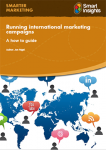
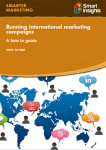
There is no universal system for structuring domains and URLs for international business; even the big brands differ in how they do it.
If you are planning on expanding internationally and want to create translated versions of your site, you’ll have to serve different versions of your site to visitors from different countries. How you set up your URL structures to do this will be important to successfully driving organic traffic through SEO.
Download Expert Member resource – Running international marketing campaigns
This guide aims to review these challenges, ask the key questions and lay out a practical guide for how run international marketing campaigns. It focuses on the digital elements of international marketing campaigns, and it will show how integration with offline activity should be managed.
Access the Running international marketing campaigns guide
Different domains and unconventional URLs
The different types of domain names can be split into three main groups: country-code top-level domain names (ccTLDs); generic top-level domain names (gTLDs) and sponsored top-level domain names (sTLD).
ccTLD give the country by using the country code, so may use .fr for their French site. gTLDs don’t use a country code in the URL, such as sites with .info, .biz. sTLDs are specialised and represent a specific community, such as .edu, .gov etc. More of these are being set up, such as .travel, .mobi and .jobs. Some companies even opt to use their domain name structure to be witty and memorable. We Make Awesome Sh.it is a good example, but not one to follow for most.
There are advantages and disadvantages structuring your URLs differently and using different domains. But no one way of doing things has so far emerged. We thought we’d show you the different ways some of the world’s top brand’s structure their URLs so you can review the options and decide on how you might want to build your URL structure when expanding internationally.
Apple
Apple uses their gTLD (apple.com) and then a subdirectory structure on top of it to host their multi-language content.
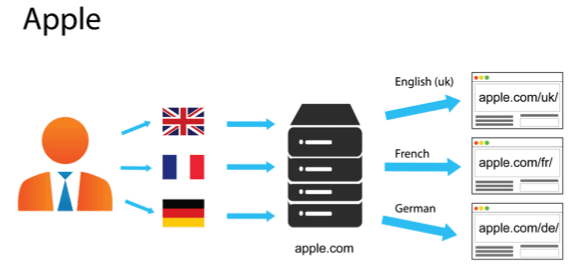
Adidas
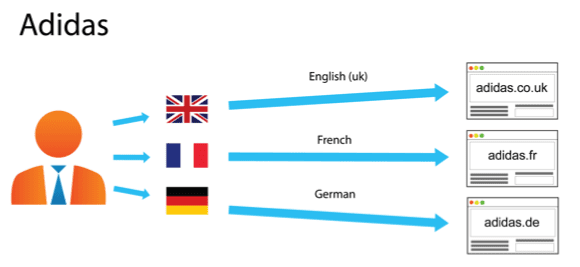
Adidas use the ccTLD option with separate domains for each country and language
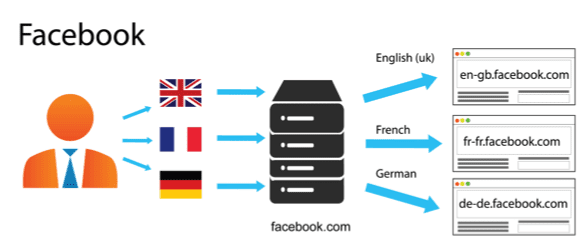
Facebook uses subdomains for both each language and each country. Such as en-gb or fr-fr.
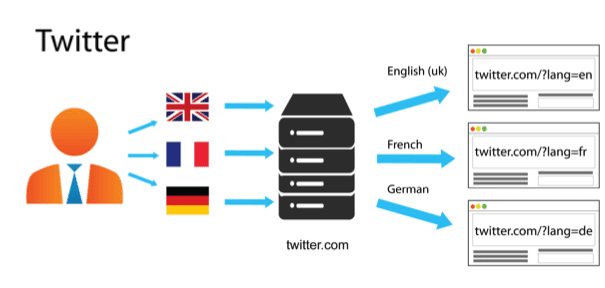
Twitter decided to use query string parameters to present multi-language content on it’s international sites.
Which is best?
All this ‘fr-fr.’ or ‘?land=fr’ seems a bit technical. As a marketer, the first question that springs to mind when looking at these different options is which one’s best? Clearly no single way of doing it stands out above all others because these sites are at the top of their game and a site as large as Twitter wouldn’t be using a certain URL structure if it meant they were losing a huge amount of traffic because of it.
That said, there are ways of doing things that have greater advantages for SEO than others. Matt Cutts stated when he was responsible for Google’s Search Quality Team that Separate ccTLDs were slightly better for SEO because the separate country domain means search engines can easily determine which language and country the site is catered to, and rank accordingly.
Google also stated that:
“if you decide to use dynamic pages (i.e., the URL contains a “?” character), be aware that not every search engine spider crawls dynamic pages as well as static pages. It helps to keep the parameters short and the number of them few.”
Therefore whilst Twitter doesn’t have to worry too much about SEO because people generally don’t come across 140 character Tweets by searching for them, (they see them in their feed) you may not want to adopt their URL structure of using /?lang=en.
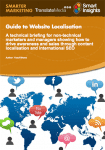
Download Expert Member resource – Website Localisation guide
A best practices briefing for marketers and managers showing how to drive awareness and sales through content localisation and international SEO.
Access the Website Localisation guide
From our sponsors: Example International domain and URL structures of top brands



